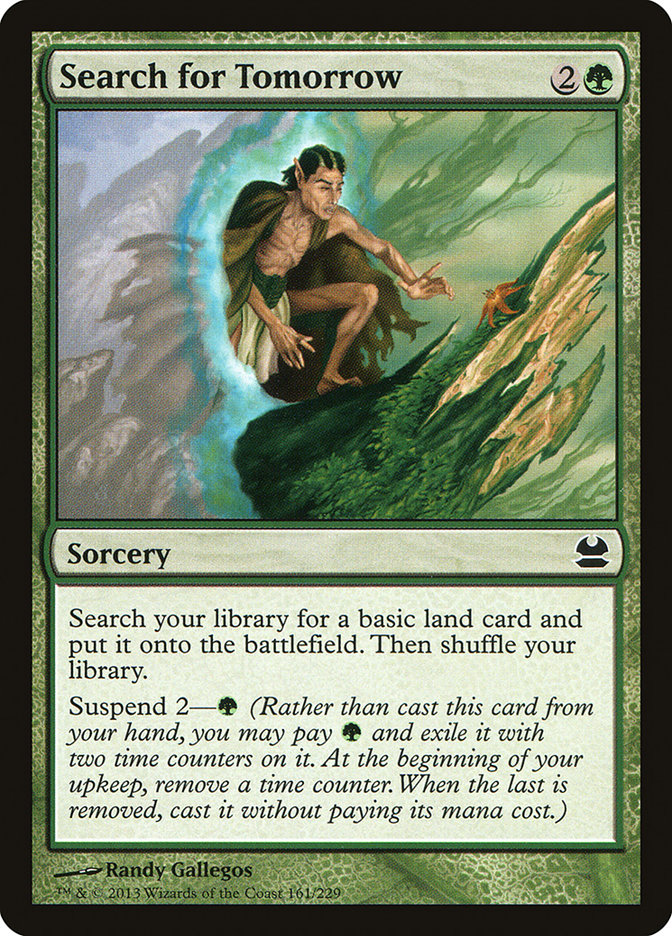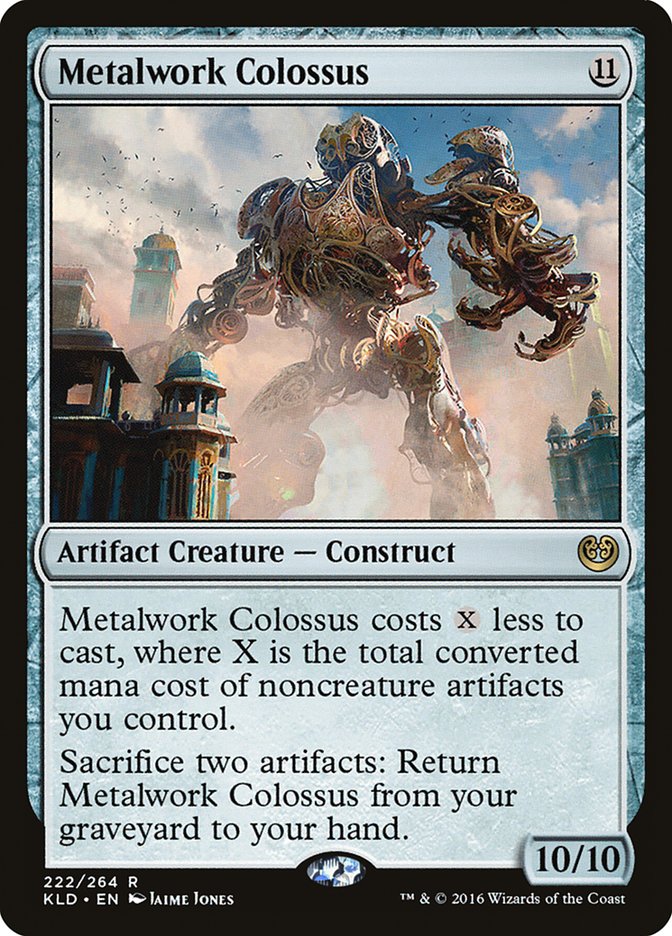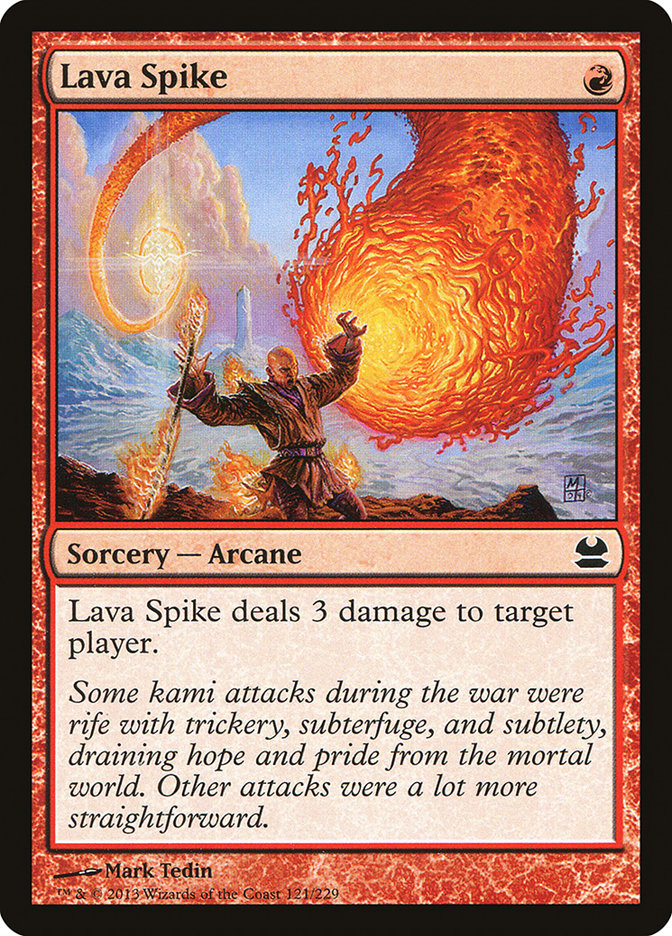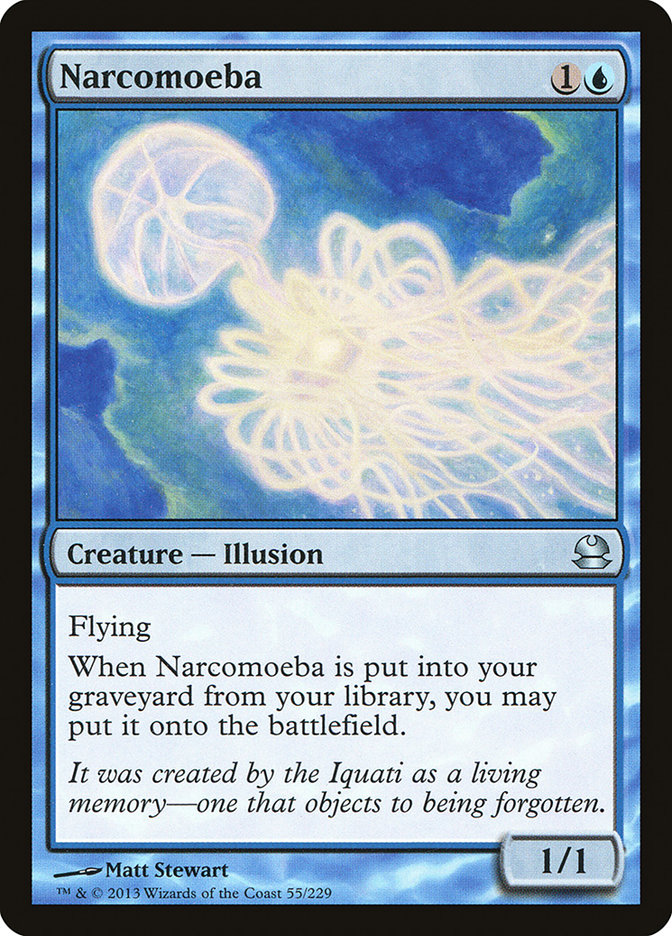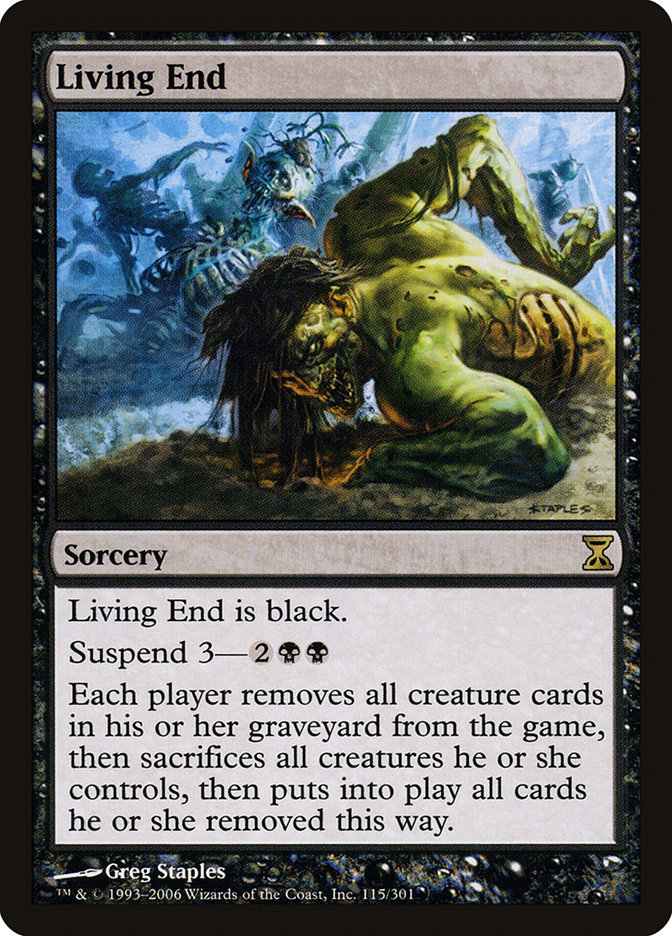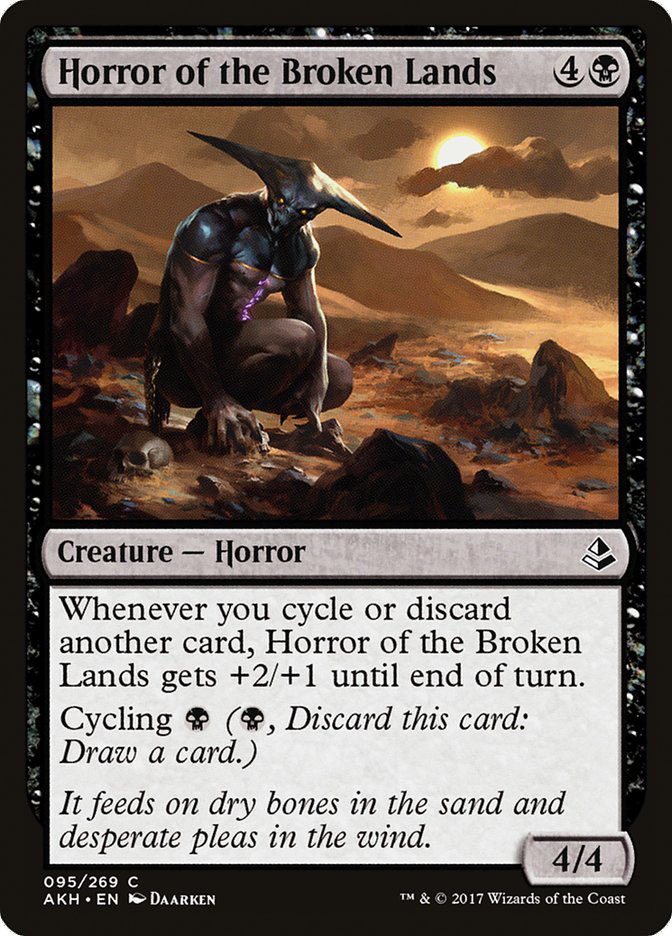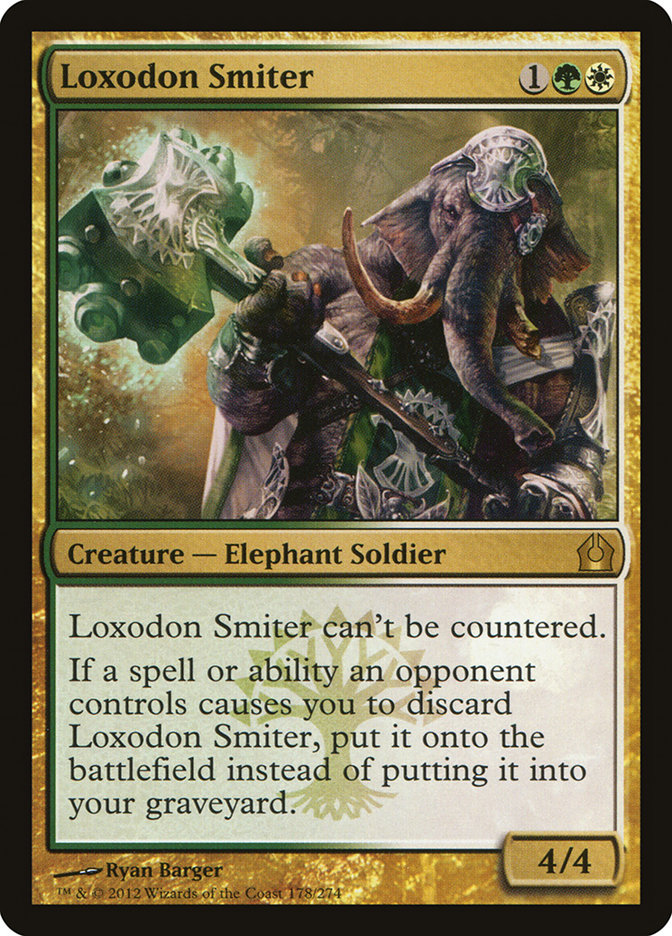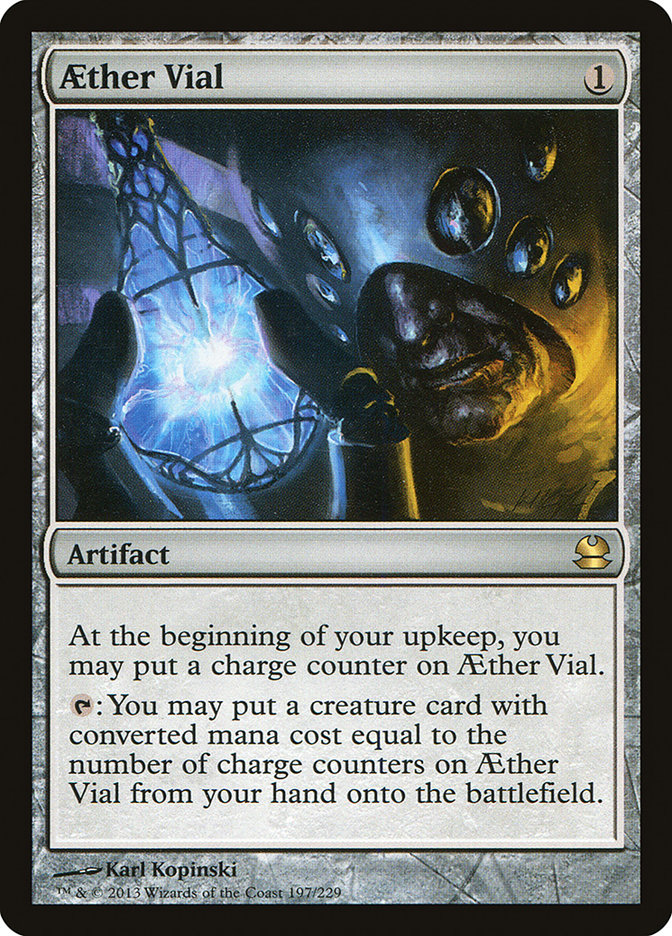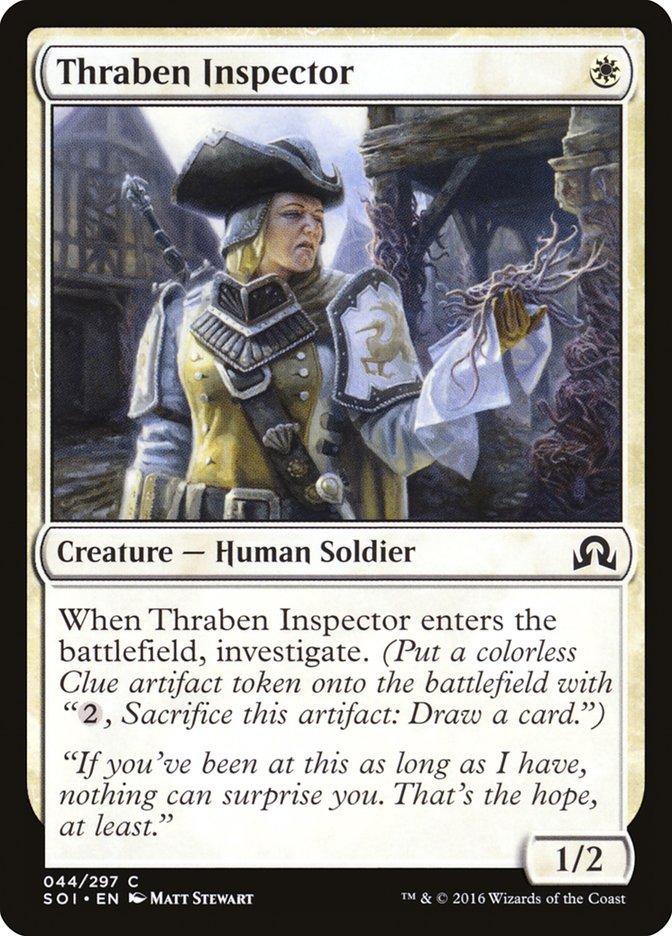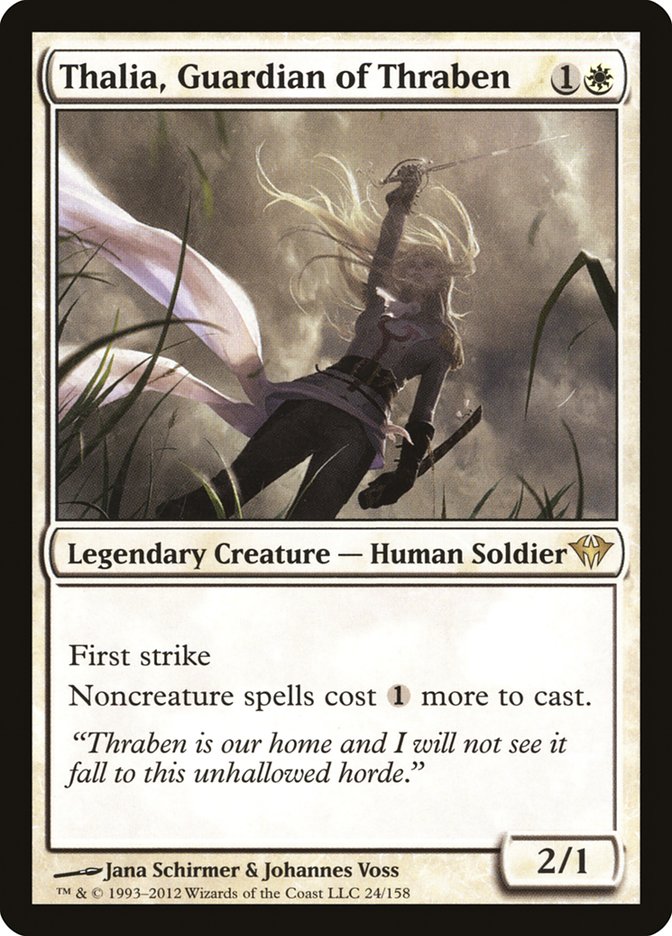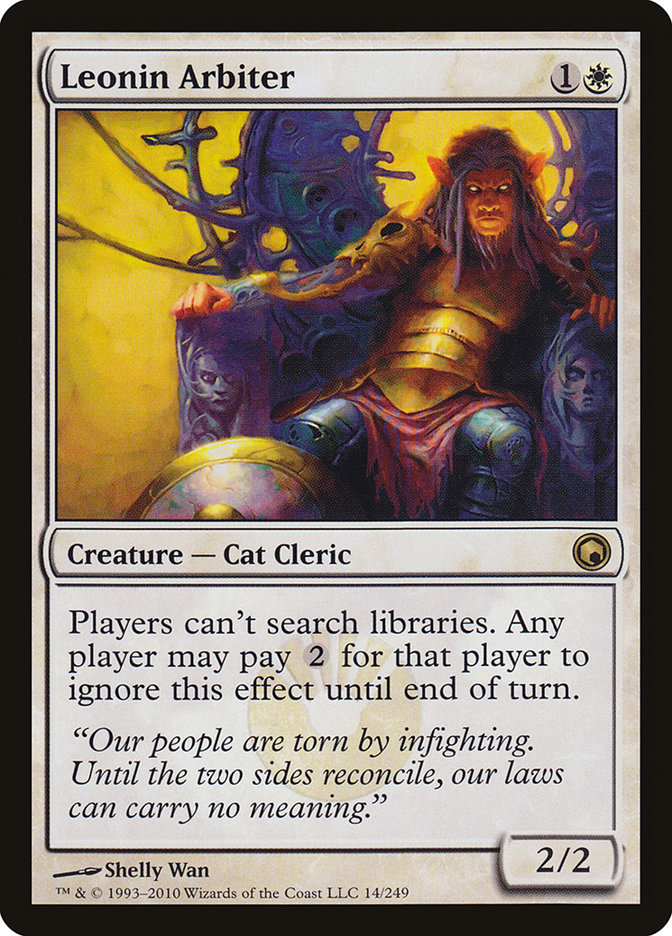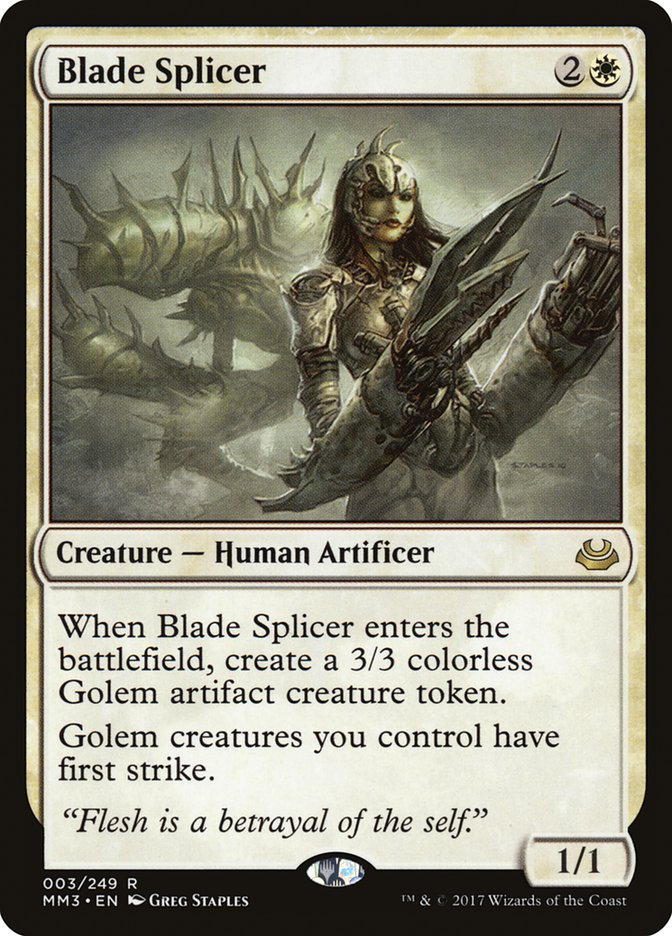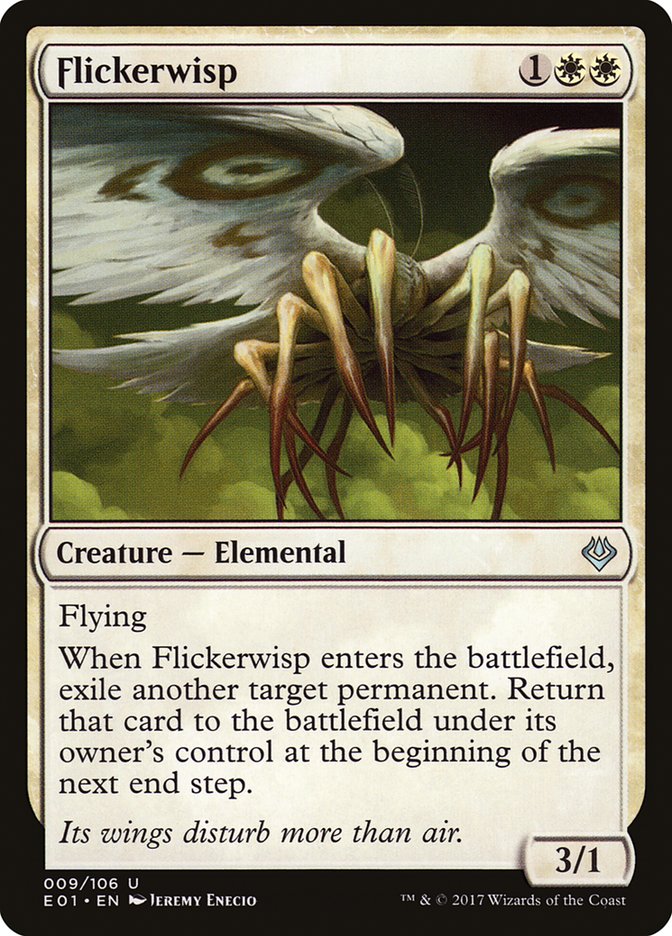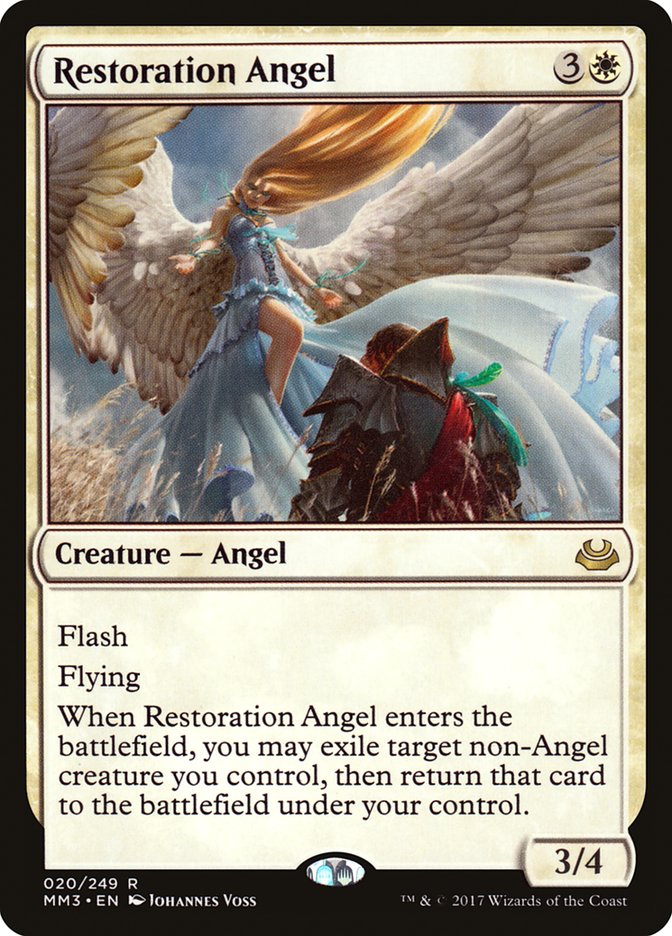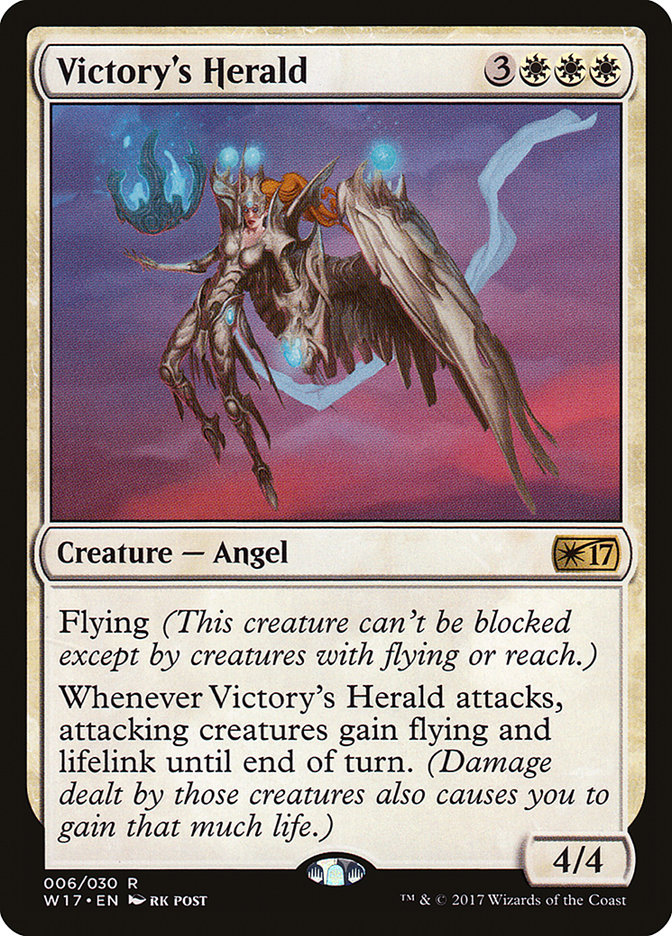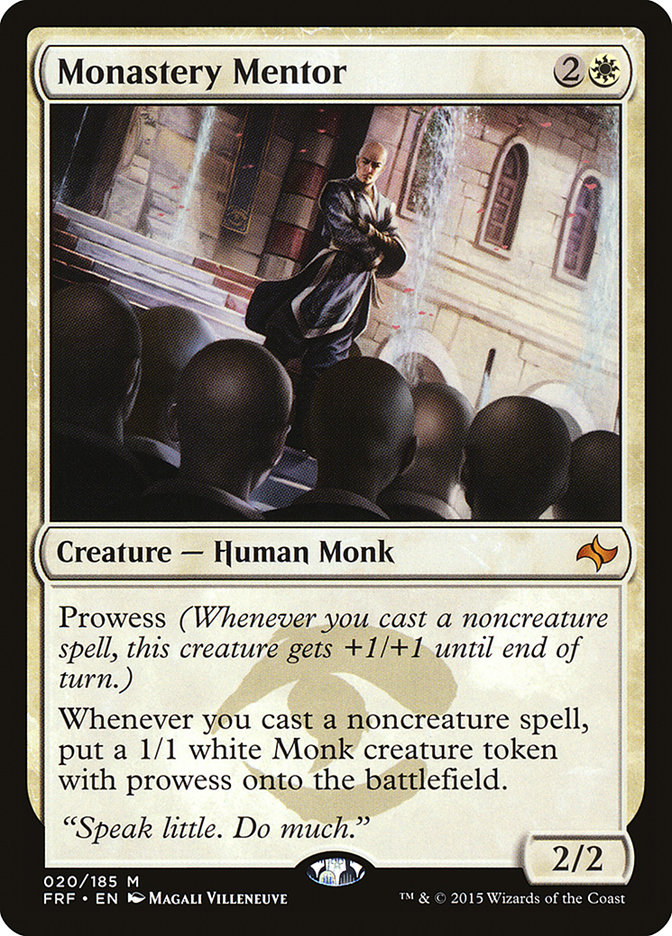About a month ago my friend, teammate, and Germ token Alex Bastecki asked if I was planning to attend the StarCityGames.com Season One Invitational.
I didn’t think I was qualified anymore, having had to pass on the last several years’ worth of Invitationals due to work commitments. I work in special education and it’s essential for continuity that I’m at work every weekday during the school year. I love what I do and wouldn’t change a thing, but it puts a hard limit on how far and how often I can travel. I had finished first, second, and seventh in three Sunday Classic tournaments during the first half of 2016, but I hadn’t been traveling much since then and hadn’t had any notable results in the events I did make it to. I checked the list anyway and was surprised to see that I did actually have one invite left. It was exciting because, despite being qualified for almost every Invitational there’s been, I’d only played in one before. My usual work commitments were on hold due to the summer break, so we locked it in.
Deciding to go was the easy part. The hard part was deciding what decks to play. Standard in particular is my nightmare. With my real-life commitments fighting for my precious little time, Magic frequently has to wait on the back burner.
Standard moves too quickly for me to keep up with. I specialize in Eternal formats because information will generally still be relevant if I don’t play in a tournament or read any articles for two weeks. Standard evolves daily, maybe faster thanks to Magic Online. I don’t have the resources to consume all the content necessary to stay on top of the format, so I opt out entirely. I watch Pro Tour and some SCG Tour coverage so I generally know what the different decks do, but the recent waves of bannings added even more doubt to my already-tenuous understanding of the format.
My first stop in looking for a deck to play was the Twitch channels. I figured someone would be playing Standard and I could start to figure things out. The first afternoon I logged into Twitch and saw Brennan DeCandio’s stream with the title “Brewing Standard for the SCG Invitational.” Ding! I watched him try deck after deck in the Standard Leagues.
Then he started winning with Metalwork Colossus. A lot.
The deck was perfect for me because it had a powerful, linear strategy that only a handful of played cards could disrupt. Only needing to know ten-ish cards in the format rather than all the cards played in stock lists was an efficient way to streamline my preparation. It also allowed me to lean on Eternal-format combo experience. Identifying the point in a game where you’re most prepared to act and your opponent is least ready to answer is a tango I’ve danced before.
Over the next few days I watched Brennan’s stream and Twitter as he tuned his list and eventually locked in on playing the deck himself. He ended up backing off it in the last days before the event due to increased hate in the Magic Online metagame, but I had already decided. Real life moves much more slowly than Magic Online, and I didn’t think the invitational field would be as savvy to the plan as Magic Online grinders.
I had also read several articles throughout the week dismissing Colossus decks because they’re too fragile and inconsistent. Again, leaning on my Eternal experience, I saw that as an exploitable aspect of the metagame. When a deck is “bad,” people are less likely to play it. If people are less likely to play it, then why dedicate sideboard slots to it? When nobody has a sideboard plan for the “bad” deck, it can be unstoppable. Linear strategies tend to be at their best when they appear to be at their worst.
Consider decks like Modern Burn, Legacy Dredge, and Vintage Storm. I believe all of those decks to be “bad” choices in general, but when the metagame is ripe, any one of them can tear a tournament field apart. None of my standard opponents cast a Dispossess; a couple had a lonely Dissenter’s Deliverance or Forsake the Worldly; one cast Traverse the Ulvenwald for a Manglehorn when he was already dead on the battlefield. In my match against Adrian Sullivan he bemoaned that his list used to have two copies Release the Gremlins in the sideboard but he had cut them for the tournament.
I found the hole and walked right in.
All credit for my standard list goes to Brennan. His article that included a section on the deck went live during Friday’s Modern portion of the Invitational, just in time for me to do a frantic dealer run and decklist rewrite before we had to turn in our Standard lists. I cold-copied his updated 75 and never looked back. Thanks, Brennan!
While Standard presented the challenge of unfamiliarity, Modern had the opposite problem. I play a lot of Modern. My baseline monthly Magic calendar includes four to six Modern tournaments, more if there is a GP or Open in range, more still during the Modern PPTQ season. The format has historically been too open to become a deck specialist, and being able to move with the metagame is essential for success. I’ve built, tested, and registered every Tier 1 and 2 deck, plus many other goofball strategies over the years. I had a lot of work to do narrowing my options down to the single best choice for this one weekend.
I have played a lot of Death’s Shadow since its rise to glory, and in every possible color combination. Coming into the event, it had the classic “best deck” problems. Do I think it’s powerful enough to overcome the target on its back, and how do I gain an edge in the mirror? I quickly decided I was not going to be Shadowing for this tournament. In the weeks leading up to the Invitational, I had gone 10-2 across three four-round Modern events with Living End.
The deck is powerful, proactive, and consistent which are all qualities I want from a deck. But my gut wouldn’t let me lock it in for the invitational. The internal screams of warning about Stubborn Denial, Chalice of the Void, Relic of Progenitus, Viscera Seer, and Arcbound Ravager didn’t let up. I don’t mind playing a deck with polarized matchups in a PPTQ or tournament with only one loss to give; the free wins are generally worth the uphill battle against the tougher matchups if you read the metagame correctly. But sixteen is a lot of rounds of Magic, and I wanted a deck that had a clean, consistent plan against Grixis Shadow, Tron, and Affinity plus staying power against anything else. I didn’t want to spend my time in a tournament this important cycling and praying to hit the Ingot Chewer or Beast Within to remove my opponent’s hate piece before it’s too late. I wanted to be the thorn in my opponents’ side, to make them find a way out of the box I put them in.
Enter Death and Taxes.
Two variants of the strategy made the Top 8 at Grand Prix Las Vegas. I played a G/W version to some success in a handful of tournaments almost two years ago. Back then the boogey-persons were Splinter Twin, classic G/R Tron, and Jund. G/W Taxes had Thalia, Voice of Resurgence, and Linvala for Twin; land destruction and a reliable clock for Tron; and Loxodon Smiter and Voice of Resurgence for Jund. In addition to the well-positioned maindeck, it had access to all the great sideboard cards white has to offer: Rest in Peace, Stony Silence, Timely Reinforcements, Kataki, etc. It was nothing fancy, but it was an effective weapon for fighting the top tier of that format.
Compare that format with the current one. Splinter Twin is gone, but Public Enemy Number One is still a deck that relies on cantrips, cheap disruption, and Snapcaster Mage to grind you into a position where you’re unable to stop their namesake card from killing you. But Grixis can’t just combo-kill you out of nowhere. Tron is still at the top of the format, but now it has creatures instead of Oblivion Stone, All Is Dust instead of Pyroclasm, and fewer Karns and Ugins. The types of decks that Hatebear strategies were good against two years ago have resurfaced with gameplans that are even more susceptible to this type of disruption.
Eternal format metagames are cyclical; strategies never go away. They dominate, get hated out, adjust to the hate, come back, and then get hated back out. It’s the circle of life. We’re in a period of Modern in which Grixis Death’s Shadow and Eldrazi Tron are the established best decks and it’s time for the format to hate them back out. I decided the Monday before the Invitational that I was going to be the most hateful person in the room.
The next decision to make was if I wanted to play mono-white or G/W. The green version tries to jump out ahead with Noble Hierarch; be mildly disruptive with its four Leonin Arbiter / two Thalia, Guardian of Thraben / four Ghost Quarter package; and punch hard with its four Collected Company, four Loxodon Smiter, and four Mirran Crusader. I think this deck is a strong choice, but it wasn’t hateful enough for me. I didn’t want to put my opponent off balance just long enough to punch through, I wanted to drag them into the dirt and squeeze the life out of them.
The mono-white version has eleven four-ofs in the deck. There are nine one-drops, ten two-drops, ten three-drops, and four four-drops. The 23 lands all enter the battlefield untapped and for free. Twelve of those lands double as spells when you’re done tapping them for mana. That’s consistency you can set your watch to.
Creatures (29)
- 1 Weathered Wayfarer
- 1 Serra Avenger
- 4 Flickerwisp
- 4 Leonin Arbiter
- 2 Mirran Crusader
- 1 Phyrexian Revoker
- 4 Blade Splicer
- 4 Thalia, Guardian of Thraben
- 4 Restoration Angel
- 4 Thraben Inspector
Lands (23)
Spells (8)

Consistency and redundancy are particularly powerful in Modern right now because of the prevalence of targeted discard effects. The deck has so many efficient plays on each part of its curve that discard loses its luster. Every card in this deck is individually mediocre; they’re all interchangeable pieces working toward a lethal critical mass. It’s hard for an opponent to collapse your hand with a single discard spell; you don’t have any Cranial Plating, Gurmag Angler, Chord of Calling, or Karn Liberated-style payoff cards. The best hit for a discard spell is Aether Vial, and if they take that, then they’ve left your actual threats in hand.
In the quarterfinals of the Top 8, my opponent cast a turn 1 Thoughtseize and had to choose between two Thraben Inspectors and Flickerwisp. Which one of those is worth two life and card? In the finals, my opponent spent a whole turn to cast a two-mana Thoughtseize thanks to Thalia and my hand had nothing but Blade Splicers in it.
Discard is an essential component of many Modern strategies. Your opponents won’t be able to sideboard the package out entirely because their deck relies on it, but it’s not great early and only gets worse as the game goes on.
Aether Vial is the key to the archetype. The deck functions well enough without one, you don’t need to mulligan looking for it. But when you have a turn 1 Aether Vial, all your already-powerful cards become uncounterable, gain flash, and free up your lands to harass the opponent and draw you extra cards.
Thraben Inspector is a lean, mean, value machine. It’s a one-drop (cast it), a two-drop (activate the Clue), and a three-drop (cast plus Clue), and it just digs for more cards at every part of the curve. It curves perfectly with a turn 1 Aether Vial, letting you Vial it onto the battlefield and immediately crack the Clue, using your Vial activation and all your mana on turn 2. In the mid-game this becomes a prime target for Flickerwisp and Restoration Angel. The raw card advantage this unassuming little Soldier generates will push you over the hump in stalled battlefield states and steal wins out from under objectively more powerful cards.
Thalia, Guardian of Thraben is a pretty messed-up Magic card. In Eternal formats, where everything is as cheap and efficient as possible, she stops a lot of shenanigans cold. She’s a linchpin in the Legacy version of Death and Taxes; she’s the entire reason a deck that features “Mother of Runes, go” can be viable in a format with Brainstorm and Dark Ritual. She’s part of the Vintage Mono-White Eldrazi deck. The Mishra’s Workshop archetype in Vintage is built around Thorn of Amethyst and Sphere of Resistance effects, which are like Thalia but don’t even get to attack. She has a big cousin named Lodestone Golem that is so horrifyingly busted that it joined cards like Black Lotus and Ancestral Recall on the Vintage Restricted List.
This effect is not to be underestimated. When your Hatebears deck isn’t also trying to cast a four-mana Collected Company, you get to max out on Thalia. That’s a very good place to be.
Leonin Arbiter is another essential four-of in the deck. On this card’s most basic level, it is another way to tax your opponent’s mana, making fetchlands cost an extra two mana to activate. In context of this deck, it’s much more brutal than that. Ghost Quarter plus Leonin Arbiter is a build-your-own Strip Mine, another card that’s restricted in Vintage. Legacy decks are built with Wasteland in mind and prepared to fight through some amount of land destruction. Most Modern decks are not prepared for Wasteland. Arbiter also upgrades Path to Exile into some sort of unreasonable, no-life-gaining Swords to Plowshares. When Thalia makes spells cost one more, but you can’t activate your fetchlands due to Arbiter, the lands you do have are under threat from Ghost Quarter, and you don’t even get a land when your creatures get Pathed, that’s no way to play Modern. Most decks can’t function under that kind of pressure.
Blade Splicer looks mediocre, but it does a lot of important things in this deck. It makes two creatures for one card, and every extra card counts in the world of constricted resources this deck forces players to live in. Due to Fatal Push, Splicer costing three mana is another hoop opponents have to go through to kill it. Then there are the Golems. Golems have a lot going for them in Modern. Here’s a few of their notable characteristics:
Golems are 3/3s. That puts them out of range for Kozilek’s Return and Pyroclasm.
Golems are colorless. That means they survive All Is Dust and can block Etched Champion.
Golems have first strike. If you have a Golem and a Thalia, Mirran Crusader, or second Golem, there aren’t many creatures in the format that can punch through. Tasigur, Gurmag Angler, an average-sized Tarmogoyf, Thought-Knot Seer, Reality Smasher, Grim Flayer, Raging Ravine, Etched Champion…the list of cards stopped cold goes on. For Death’s Shadow to be big enough to attack through two Golems, its controller would have to be at six life or less. Anyone in the crowd know what three plus three is on the backswing?
Flickerwisp is deceptively powerful. In addition to the obvious blink-your-own-creatures synergies, it can also clear a blocker for a turn, remove an Ensnaring Bridge to get a big attack through, reset a planeswalker or other card that gains value over several turns (I blinked a Ratchet Bomb multiple times in the semifinals), outright kill any token creature (my favorite is Voice of Resurgence), destroy Walking Ballista (though the Wisp will go down with it), effectively destroy a Chalice of the Void, and perform countless other useful interactions. If you have a Vial on three, your opponent has to consider “What happens if they have Flickerwisp?” for every single play they make. The threat of Flickerwisp with flash makes good attacks hard to find. And on top of all the cool things its ability does, Flickerwisp is also a three-power flying creature and one of your fastest ways to turn the corner.
Restoration Angel is the last creature on the list, but certainly not the least. Resto is huge, flies, and has flash whether you have an Aether Vial or not. She saves your creatures from removal spells, and in combat, she gives you more Clues or more Golems. If your opponent pays two mana to turn off your Leonin Arbiter, you can use Restoration Angel to blink it and make them pay the Arbiter tax again; if you blink a Flickerwisp, you get to recycle all the sweet interactions mentioned above. And remember, if you blink a Flickerwisp in your opponent’s end step, the permanent you remove won’t come back until your end step. That’s a full turn with six power of flying and one less critical resource for your opponent to work with. That’s how a lot of games end.
Mirran Crusader, Phyrexian Revoker, Serra Avenger, and Weathered Wayfarer are the flex slots. I didn’t like Revoker in the tournament and sideboarded it out in almost every matchup. If your metagame is full of Lilianas, Noble Hierarchs, Cranial Platings, Endbringers, and/or Krark-Clan Ironworks, maybe you want to go the other way and cut Crusaders for more Revokers.
Weathered Wayfarer is also a little unintuitive in the deck. The dream is to set up an Arbiter and just start throwing Ghost Quarters at all their lands, but Arbiter slows down your searching too. That’s a significant non-bo. There was a game where I had to activate Ghost Quarter, in response activate Wayfarer, and then after Wayfarer’s ability resolved and before Ghost Quarter’s did, I Vialed in Arbiter. That was a lot of work to set up one search, and I wasn’t able to activate Wayfarer again that game.
I went with two Mirran Crusaders in the main because they crush Grixis Death’s Shadow and I came to hate. Most Death’s Shadow lists can’t remove a Crusader in the maindeck, and chumping with a Snapcaster Mage is the only way they can interact in combat. Serra Avenger is better against Tron and Affinity if you’re more worried about those decks.
If I had to redo the Invitational tomorrow, I would have a second Avenger and third Crusader over Wayfarer and Revoker. Your mileage will vary and you shouldn’t settle into a “correct” configuration here; use these slots to get ahead of your expected metagame. This is the most customizable part of the deck.
The sideboard is clean and simple. You should bring in only the most effective cards and only to replace cards you actively don’t want in the matchup. Don’t water down your core strategy by bringing in too many sideboard cards with marginal utility.
For example, in my quarterfinal match against Bitterblossom Abzan, our testing brought us to the conclusion that I only actively want to bring in Mirran Crusader. Relic of Progenitus was a little tempting because of Lingering Souls, Knight of the Reliquary, and Tarmogoyf, but you have to trust the deck to do what it does in gumming up the ground against Tarmogoyfs and making Lingering Souls a bad deal with Thalia and land destruction. If it’s your job to apply pressure, you can’t waste draw steps with things like Relic when you need to find Blade Splicers.
I only wanted to bring in the one card, but I needed to take out two, since Weathered Wayfarer and Phyrexian Revoker are both low-impact liabilities against the deck full of 1/1 tokens and Zealous Persecutions. I brought in one Dusk // Dawn as the least-bad option to replace the awful creatures that had to be sideboarded out. If he had been on a more traditional build with Grim Flayers and Scavenging Oozes instead of Bitterblossom, I would have wanted both Dusk // Dawns.
Against Tron, the only sideboarding I did was taking out the two Mirran Crusaders for two Dusk // Dawn. Don’t get tricked by the Stony Silence; it does very little against their deck and you need your Aether Vials online so you can use your lands to attack theirs at every opportunity.
In the finals against Grixis Death’s Shadow, I brought in Mirran Crusader and two Relics, taking out Wayfarer, Revoker, and one Aether Vial. Vial is your best card, but it can be too slow in certain matchups and you rarely want to draw one after turn 1. I would cut them entirely against Dredge, Burn, Storm, Affinity, Ad Nauseam, Zoo, etc.
Notice that I just replaced the cards I didn’t want with the two Relics; I didn’t start shaving Flickerwisps trying to jam all four Relics in. You have to respect your core gameplan. Don’t be tempted by Dusk // Dawn in this matchup either. You’re a Thalia deck and you’re attacking their mana and drawing cards as much as possible with your lands. You don’t want to be playing to a battlefield where you have five lands and they have big threats. Your defensive plan is to make a wall of 3/3 Golems and your win conditions are your three-power fliers. You can’t be Dusk-ing them away.
So that’s my sell on Death and Taxes in Modern. The deck looks weak on paper, but that’s kind of the point. It’s a collection of individually underwhelming cards that create a machine that is greater than the sum of its parts. If Death’s Shadow and Tron are getting you down in your local metagame, I can’t recommend this deck enough.
First
I’d like to close this article out with some self-indulgence about what this experience means to me.
First place is very valuable to me in tournaments I play in. My travel and testing group give me a lot of flack because I’m never satisfied with a Top 8. I don’t get out of bed for Top 8. I show up to win. It doesn’t matter if we split prizes in the Top 4 of a local cash event; I’m still disappointed if I lose in the finals.
Throughout the weekend, I did a number of things that always kept first place in mind. When I was 2-2 in Round 4 of the invitational, I didn’t go check the side event schedule for the weekend. When I was getting dressed for Day 2, I had to decide if I wanted to wear my favorite or more comfortable shirt that day; I determined I’d be happier wearing it for all the coverage on Sunday. When I fell to X-3 on Day 2, I didn’t go figure out Top 16 and Top 32 prizes. I genuinely didn’t know any of the prizes for this event other than first place until I was presented with the Top 8 prize redistribution ballot.
When I made a calculated risk to draw in the final round and everything went wrong to put me on the bubble between eighth and ninth, I packed up all my other stuff from the day but kept my pen in my pocket because I knew I’d need to fill out my Top 8 profile. When testing Top 8 matchups I only tested on the draw, because I had no intention of ever being on the play.
I don’t say these things to brag or sound arrogant. I just firmly believe that mental state is essential for success. Thinking “I just want to Day 2” or “I’m just happy I made Top 8” is a death sentence in a tournament. I always keep that hard edge on my expectations when I decide to show up for an event.
None of the above is mutually exclusive with sportsmanship. All of my opponents were wished a genuine “good luck” before every game and got a handshake if they beat me. I believe you get back what you put out into the world, and I hope my opponents in this and every tournament walk away happy with their interactions with me, even if they’re unhappy about the match result.
The prize itself definitely had me checking the SCG Open schedule on my ride home. I won’t be flying out to every Open now, as my career still gets priority, but I may push my comfortable driving distance or pick up a Standard deck for drivable events that I wouldn’t have done before.
The token is awesome. I think we’ve all watched Invitational coverage at home and wondered what token we’d want to be. It’s pretty surreal to actually get to decide. I went with a Human Monk token. I know it’s been done before, but it’s the token I and my friends will put onto the battlefield the most often and it will mean the most to the players who mean the most to me. Being The Monarch will have to wait for the next Invitational. One for you, one for me, Clooney-style.
I’m also now invited to the Pro Tour. This is a weird prize for me because the Pro Tour is not something I’ve ever pursued. I judged every PTQ when I was in college, and since moving into the adult world I’ve been too focused on Eternal formats and my job for grinding PPTQs to be an option. When my friends talk about Pro Tour invites, I usually just shrug and say, “Maybe if I spike a Legacy GP.”
But here I am, qualified for the Pro Tour.
It’s heavy to know that I fell backwards into this instead of one of the thousands of people who put countless hours every week into trying to earn exactly this prize. For those people and for myself, I’m going to take this invite seriously and put in the work to make it count.
And finally, the most important thing of all: the support I received this weekend was incredible. On the Monday after the event, Facebook gave me a popup that said, “You’ve received 12,000 lifetime likes!” I think about half of them happened this weekend. I was getting texts and messages from people who don’t even play Magic but could tell this was a Big Deal. And the high-fives and hugs and support from everyone on site, all the friends and acquaintances stacked up from twenty years of playing Magic, was amazing.
Last, a special shout-out to my one-man team on-site, Alex Bastecki. He scouted the field, helped with tiebreaker math, built the decks and tested my Top 8 matchups with me, and generally had all of my best interests in mind from the moment he dropped out of the main event. I have no doubt that he celebrated harder when they called my name for Top 8 than I did and I heard his celebration across the hall in the viewing area every time I won a game. Additional thanks to Chris Stagno and Jarvis Yu, who also made notable contributions to pinning down my sideboard plans for the Top 8.
That’s my Invitational story: the tale of a relative no-name who pinned the metagame and never took his eyes off the trophy. Feel free to tweet me any questions or comments @BoshNRoll, and I’ll see you at an Open soon.


